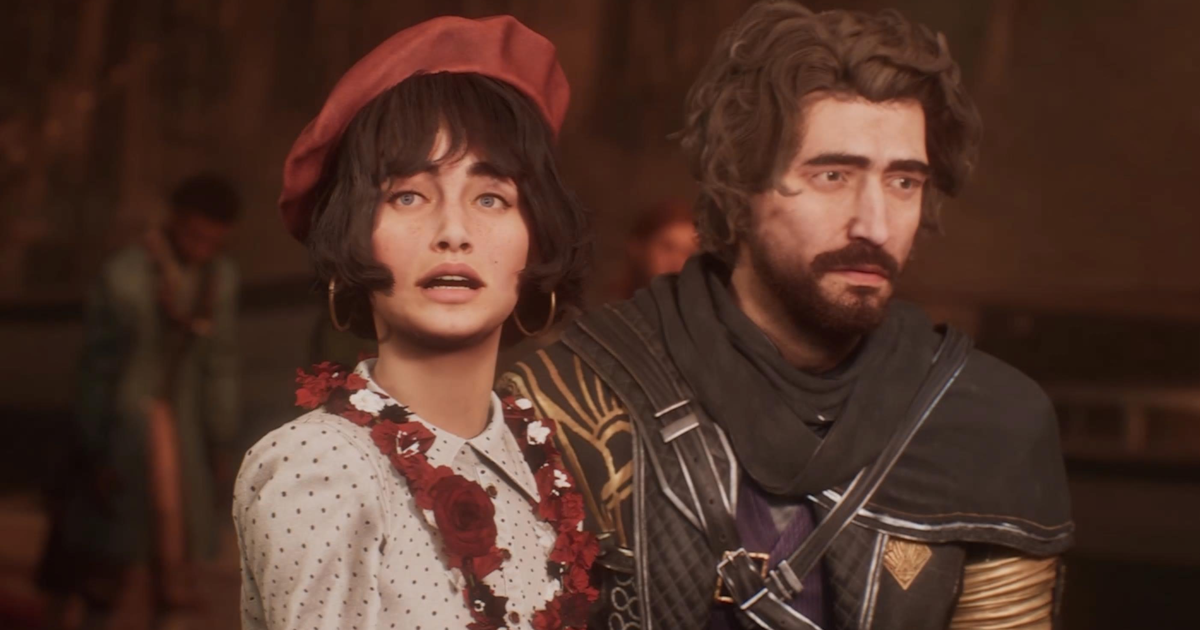There’s a conversation at the start of Clair Obscur: Expedition 33 that stuck with me throughout. A pair of ex-lovers discuss why they split up: one wanted children, the other did not. It’s the sort of human question that makes a fantasy story – no matter how surreal – a relatable one.
And Clair Obscur is certainly a surreal and thought-provoking game, obsessed with the notion of death. Each year The Paintress, sat atop a colossal monolith, paints a number that dooms all people of that age to die. Annual expeditions are sent out to defeat her, but it’s a seemingly impossible task. Death – in this world of painterly terms and sentient brush heads – is inevitable, which makes the question of children a pertinent choice. Is it selfish to not replenish humanity, or selfish to bring children into such a world? And before death comes for us all, what’s the legacy you’ll leave behind? Perhaps a child, a painting, or – in the case of French studio Sandfall Interactive – a video game.
Clair Obscur joins a long legacy of Japanese style RPGs, with clear influences from the likes of Final Fantasy, Persona, and FromSoftware’s Dark Souls games. Its use of turn-based combat and an interactive world map hark back to the glory days of 90s Squaresoft, while its stat bonuses and parry-focused combat are pure Soulsborne. Yet as an amalgamation of all this – with a healthy dose of French authenticity – Clair Obscur subtly nods to the past while maintaining its own unique identity.
Expectations should be set, however. It may look and feel like a modern epic, with its fanciful environments and impressively expressive characters, but it’s also an ambitious game from a team of just 30 people that’s smaller in scope than you might expect. That may disappoint, but it’s allowed the team to focus on what it does best, ensuring there’s substance beyond the style. This is an indie game in AAA clothing; or a small, intricate painting in a very fancy frame.
Truly, this is a gorgeous work of art. It’s a world consumed by haunting melancholia, but beauty and wonder too as it dips a brush firmly in the surreal to match its bizarre narrative. Sun-dappled forest pathways give way to shimmering underwater landscapes with whales flying overhead; lost Belle Epoque towns and civilisations lead to abstract ship graveyards swarming with gothic knights from a FromSoftware nightmare. And the visuals are matched by a mournful score that transforms from gently plucked strings and piano songs, to synths and rock guitars in the heat of battle. A little more levity wouldn’t go amiss as the game as a whole is consistently dour and downbeat, and even its most colourful areas remain autumnal. Despite its name Clair Obscur is more shade than light.
The world map is particularly impressive, visually modernising archaic design. Where, for instance, Final Fantasy 7 Rebirth transformed the flat textures of the PS1 original’s world map into a fully open world, Clair Obscur has a more traditional map to explore with separate dungeons (and the odd town), but given a remarkable facelift. The world map exemplifies the studio’s approach to the game as a whole: taking the smaller scope of older game design, and enriching it for a modern audience. And once it eventually opens up and you’re given complete freedom to discover its secrets, there’s surprising depth too – the endgame is filled with extra dungeons and super bosses. Just don’t expect a sprawling world and huge variety of gameplay styles and minigames as with the game’s contemporaries – instead, combat is your sole meaningful interaction with the world.
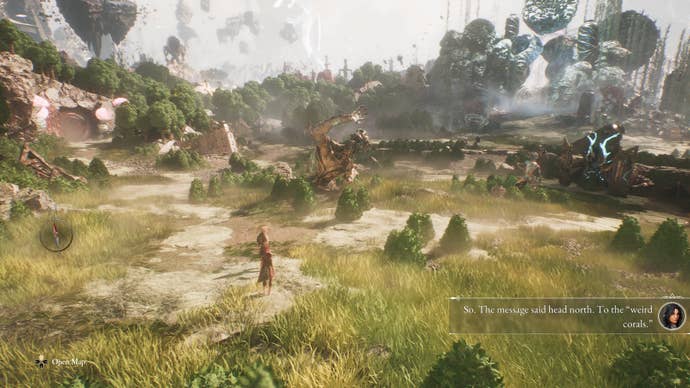
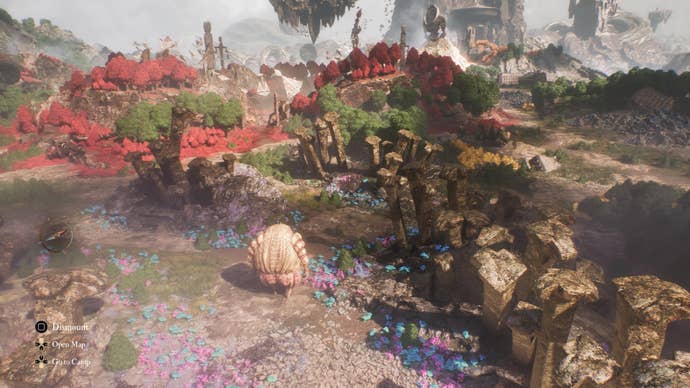
Dungeon exploration does suffer as a result, lacking variety. Here the game is at its most underwhelming: sure, the environments look pretty, but progress is linear beyond a few side paths. As with Dark Souls, progression is through checkpoints (here flags, instead of bonfires) that replenish limited health flasks and respawn enemies. Yet while each area is visually distinct, exploration becomes repetitive across the game with level design consisting of simplistic pathways to follow. The lack of a minimap is a curious decision too. On the one hand its omission leads to frustrating disorientation, especially in later labyrinths. On the other hand, its inclusion may have underlined how limited each area actually is. Of all the Final Fantasy games it’s inspired by, Clair Obscur often feels most like Final Fantasy 13 with its beautiful but linear progression. At its most basic, the game is a one-note combat gauntlet that left me gasping for a proper dungeon puzzle.
Thankfully, while combat is the dominant gameplay feature, it’s utterly sublime and varied enough to carry the whole experience. For anyone crying out for a modernised version of traditional Japanese-style turn-based combat, Clair Obscur is for you. Its stylish battle UI takes a cue from Persona, while its action elements are a natural evolution of Super Mario RPG and the more recent Sea of Stars. Players aren’t passive during combat, but must actively strike, dodge, shoot and parry with well-timed button presses, along with the usual elemental affinities and flashy skills.
That means Clair Obscur is, essentially, a rhythm game. And it certainly takes a beat to adjust to its tempo. Dodging requires looser timing than parrying, but the latter is as satisfying as Sekiro once it clicks. Enemy combos require every attack to be parried in succession, meaning each round of enemy strikes is like a dance pattern to be learned. It’s not entirely necessary to get through the game (and can be automated for accessibility), but the parry is so powerful – and feels so good as the sound effects boom and the action crawls into slow motion – it’s a defining part of the game, especially during more challenging encounters.
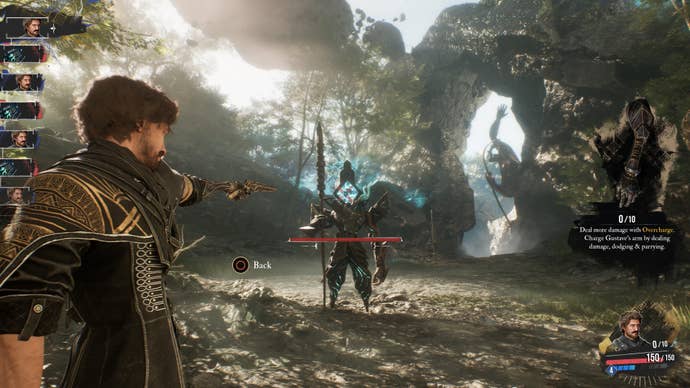
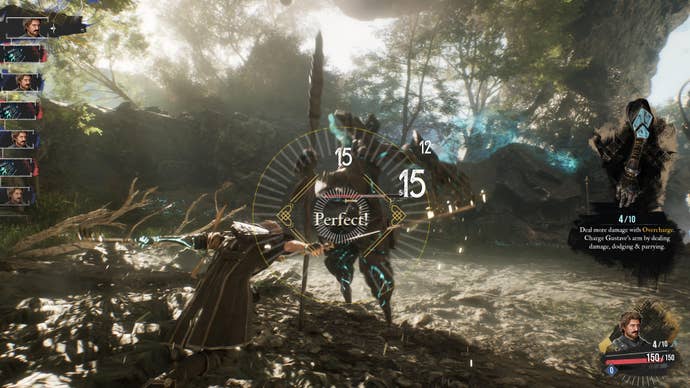
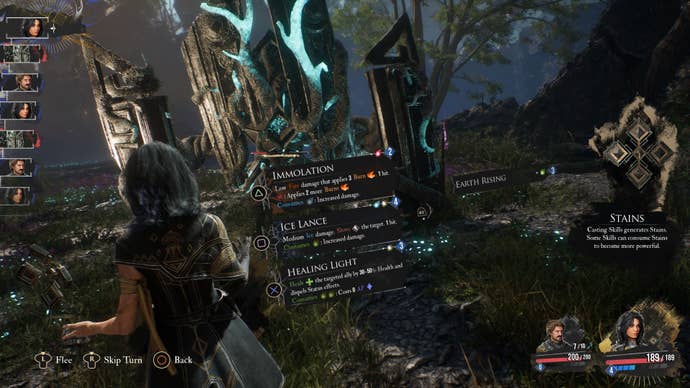
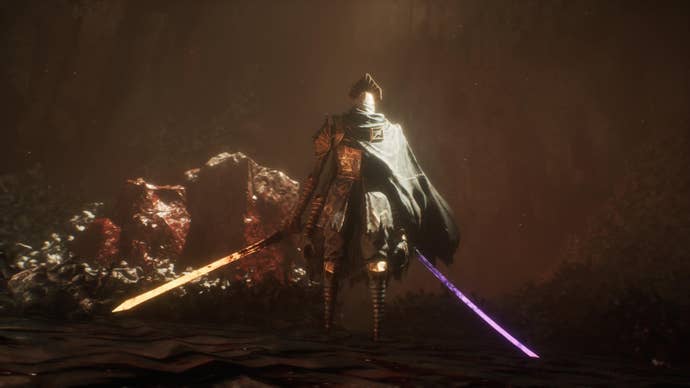
But that’s just the beginning. Clair Obscur’s combat system has multiple layers. Each character in the party has their own distinct method of fighting – not just a different weapon, but a new system to learn. Take the magic-wielding Lune: her elemental spells leave behind “stains” which are absorbed by other spells to buff their power, leading to gratifying sequences of ice – fire – lightning – earth incantations, if you can get the timing right. Maelle switches between offensive and defensive stances with each stab of her rapier; while Sciel uses cards to build Foretell on enemies that’s absorbed for multiple effects, while balancing her sun and moon scythe abilities to enter a fierce twilight mode. Each character is notable for their fighting style more than their personality and regularly switching up the party prevents combat from ever feeling stale, while new skills are learned on an ability tree to further tweak playstyles. I just wish it was possible to switch between characters mid-battle, as in Final Fantasy 10, to make use of them more equally.
And there’s more! Characters collect numerous weapons each with elemental affinities and extra buffs, once levelled up. Further, these weapons have attribute scaling with certain character stats, just like Dark Souls – for instance, one weapon may give an attack boost based on a character’s speed stat, while another on luck or vitality. It’s a smart way to ensure characters can be customised based on playstyle and each new piece of equipment is a viable option, rather than simply opting for the newest, strongest weapon.
Then there are Pictos, Clair Obscur’s other layer of customisation that works similarly to Final Fantasy 9’s Abilities. Pictos are found dotted around the world or are rewarded after enemy encounters. These provide both a stat boost and some sort of buff: replenishing health on a parry, for instance, or providing extra ability points on a perfectly timed dodge. Players can equip three Pictos at a time, but after four battles the effects are permanently learned and can be equipped by any character. There are dozens of Pictos to find and as characters grow they can stack multiple learned abilities – it’s an incredibly empowering system.
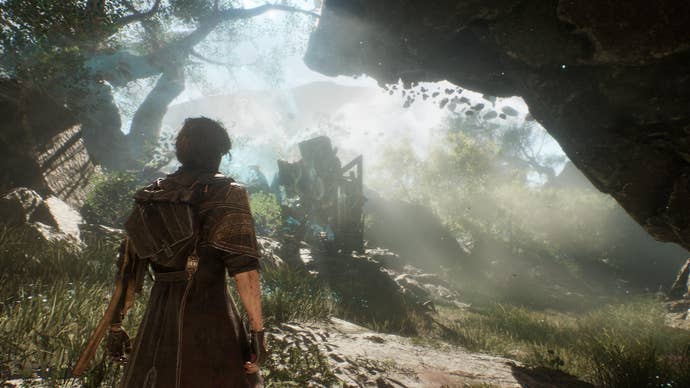
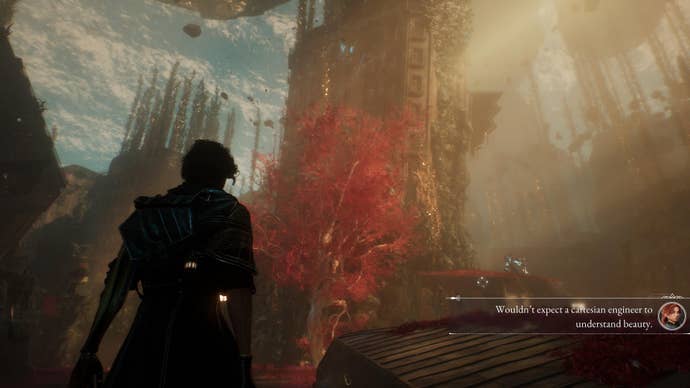
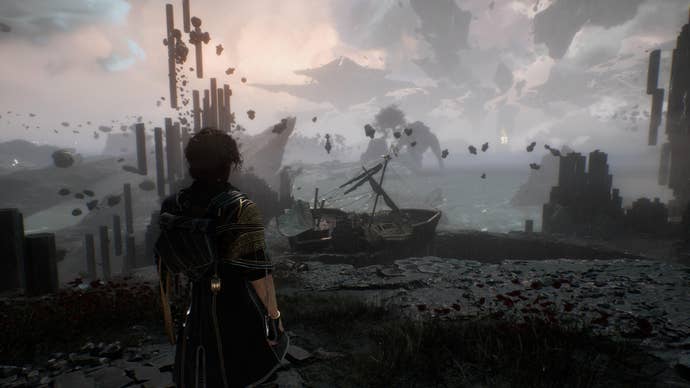
If all this appears too complex, know that the game doles these options out slowly, while the endgame provides plenty of challenge to play around with (or respec) your character builds. My only gripe is the menus feel designed for mouse and cursor more than a controller and can be confusing to navigate, creating a slightly laborious layer to customisation. Still, Clair Obscur’s combat is ideal for RPG players whose love for tinkering away in skill swapping is matched by a love of musical rhythm (that’s me, hi!).
Of course, the best RPGs are those that marry mechanical and narrative depth. Clair Obscur’s plot sensitively tackles traumatic themes of death and grief, but it’s also convoluted and impressionistic, like a mess of colour that very slowly takes shape as you step back. Its dreamlike, fantastical quality does ultimately settle into a more human, family drama with relatable questions posed (the aforementioned children, for instance), while collectible journals offer extra snippets of lore and characters chatter through small campfire interactions. Much of this occurs in the endgame, where the bulk of both character moments and challenging combat occur to tie it all together brilliantly. I just wish it spent less time earlier on revelling in mystery and explained its fundamental plot points a little quicker. There’s enough intrigue to keep you gripped, but initially combat drew me in more than plot.
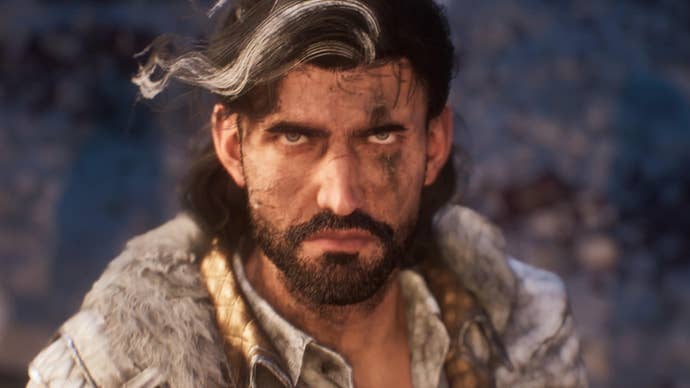
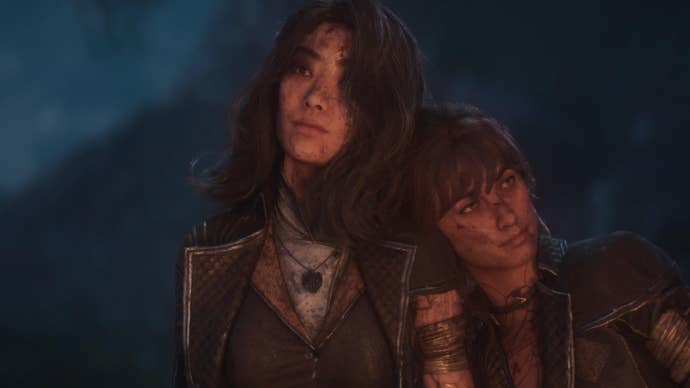
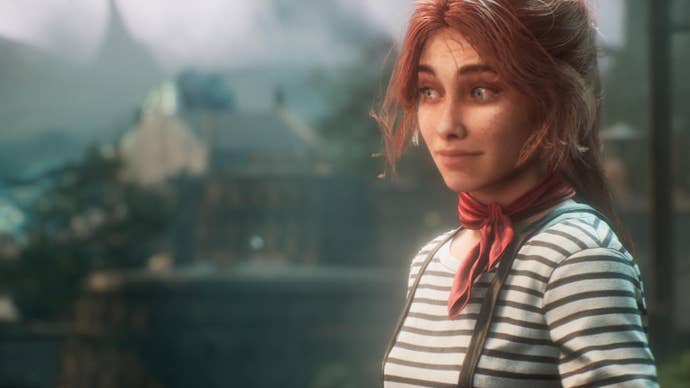
Pacing is the main issue, then. It’s as if the writers are so concerned with subtle storytelling ahead of its exciting plot twists, they’re scared to give anything away. Dialogue, as a result, feels too fragmented and lacks conversational flow, as if the characters know details yet to be explained. For much of the story I felt like an outsider, as frustrated as I was mesmerised. I did eventually warm to the characters through sincere performances from the likes of Ben Starr and Jennifer English, but characterisation is in broad brush strokes and, beyond combat styles, the party isn’t as iconic as those from the Final Fantasy games Clair Obscur aims to ape.
But then you’re back in battle, not against a frightening creature but a French mime after dressing the characters up in a stripy costume called Baguette. Outside the core plot, there’s a wonderful silliness – and self-deprecation – to Clair Obscur that, together with its outstanding art direction and unique battle mechanics, ensure the game is distinct. It’s an ambitious yet impressive debut from the studio that, despite a somewhat fanciful narrative, is a pensive examination of grief and the power of art. And while the development team has chosen to focus on certain areas to the detriment of others, where it succeeds it really excels. Clair Obscur may be a painting with a limited colour palette, but the result is a bold and striking vision.
